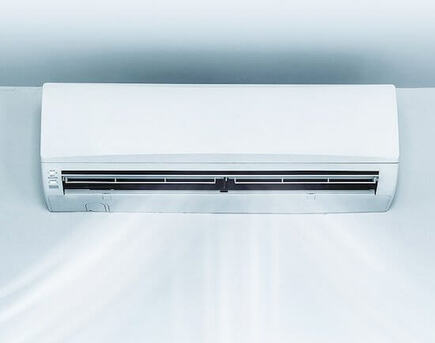How Does Air Conditioning WorkDo you know how does air conditioning work? Perhaps, you know it takes heat energy out of a premise to move it outside. And this is why you and all of us value air conditioning. How much? Let’s turn to statistics. According to recent surveys, the number of air conditioners installed worldwide reached almost two million units. Over the past decade, growth was around 55 percent. Moreover, the growth is expected to continue with an average growth rate of at least 50 percent per decade. To clarify, the share of households that install at least one air con unit is steadily increasing. For example, in some countries, this share has already exceeded 90%. But, let’s get a full idea of how an air conditioner really works. Experts of London Engineers Company are here to explain it to the very last detail. A few simple facts what an air conditioner can doBefore we get started to dig into all the details of aircon working, let’s take what lays on the surface. To clarify, we are talking about results air conditioning delivers.
How central air conditioning worksCentral air conditioning cools the house through via ductwork, which runs through the premise. The fan makes the air circulate to get cool. Then, the cool air runs through ductwork to a room and enters it. At last, the hot air is drawn out of the room and transfers to outside. As the thermostat detects the temperature in the room reaches its set points, the circulation stops. How a split system worksWhen it comes to a split system, the refrigerant plays a crucial role in cooling a room. Initially, the refrigerant that comes into the evaporator is a gas. However, when the compressor starts working, it condenses this gas to a liquid. Then, with the help of an indoor unit’s fan, this liquid runs through the evaporator coil and circulates through the evaporator fins. Here, the heat energy is blown from the evaporator fins as the refrigerant evaporates and the air cools. Then, the outdoor fan blows the cool air back into the premise. At that time, the condenser, which is the unit located outdoor, liquefies the refrigerant and pushes it again to the evaporator. At least, in the evaporator the refrigerant turns from a liquid to gas state and the cycle begins from the start. The cycle goes on until the thermostat detects the temperature in the room reaches its set parameters.
0 Comments
Leave a Reply. |
AuthorLE Company team |
- Home
-
Services
-
Repair
>
- Emergency Restaurant Equipment Repair
- Commercial Catering Equipment Repair and Maintenance >
- Fridge and Freezer >
- Gas Boiler Repair
- Ice Maker Repair
- Ice Cream Machine Repair
- Grill and Barbecue >
- Heat Pump Repair
- Central Heating Boiler Service
- Dishwasher repair >
- Oven Repairs >
- Coffee Machine Repairs
- Air Conditioning Repair
- Heating Repairs
- Commercial Gas Boiler Service
- Cold Room Repairs
- Plumbing Repairs
- Electricity Repairs
- Charge Point Services >
- Restaurant Refurbishment
- Medical Equipment Repair >
- Electric Boiler Repair
- Dental Equipment Repair
-
Installation
>
- Fridge and Freezer >
- Dishwasher Installation
- Oven Installation
- Coffee Machine Installation
- Air Conditioner Installation
- Heating Installation
- Cold Room Installation
- Plumbing Installation
- Electricity Installation
- Sub Zero Installation
- Gas Combi Boiler Installation
- Heat Pump Installation
- Commercial Boiler Installation
- EV Charger Installation >
- Gas Safe
- Energy Performance Contract
- Bespoke Designer Kitchens
- Medical Equipment Installation >
- Electric Boiler Installation
- Rental >
- Sectors >
- Hybrid Vehicle >
- Electric Vehicle >
-
Repair
>
- Products
-
Brands
- About
- Payment
- Contact us
|
Email
|
Office
|
Address
|
|
Specialist
|
12 Melcombe Place
Marylebone Station London, NW1 6JJ |
© COPYRIGHT 2015. ALL RIGHTS RESERVED.
- Home
-
Services
-
Repair
>
- Emergency Restaurant Equipment Repair
- Commercial Catering Equipment Repair and Maintenance >
- Fridge and Freezer >
- Gas Boiler Repair
- Ice Maker Repair
- Ice Cream Machine Repair
- Grill and Barbecue >
- Heat Pump Repair
- Central Heating Boiler Service
- Dishwasher repair >
- Oven Repairs >
- Coffee Machine Repairs
- Air Conditioning Repair
- Heating Repairs
- Commercial Gas Boiler Service
- Cold Room Repairs
- Plumbing Repairs
- Electricity Repairs
- Charge Point Services >
- Restaurant Refurbishment
- Medical Equipment Repair >
- Electric Boiler Repair
- Dental Equipment Repair
-
Installation
>
- Fridge and Freezer >
- Dishwasher Installation
- Oven Installation
- Coffee Machine Installation
- Air Conditioner Installation
- Heating Installation
- Cold Room Installation
- Plumbing Installation
- Electricity Installation
- Sub Zero Installation
- Gas Combi Boiler Installation
- Heat Pump Installation
- Commercial Boiler Installation
- EV Charger Installation >
- Gas Safe
- Energy Performance Contract
- Bespoke Designer Kitchens
- Medical Equipment Installation >
- Electric Boiler Installation
- Rental >
- Sectors >
- Hybrid Vehicle >
- Electric Vehicle >
-
Repair
>
- Products
-
Brands
- About
- Payment
- Contact us


 RSS Feed
RSS Feed
